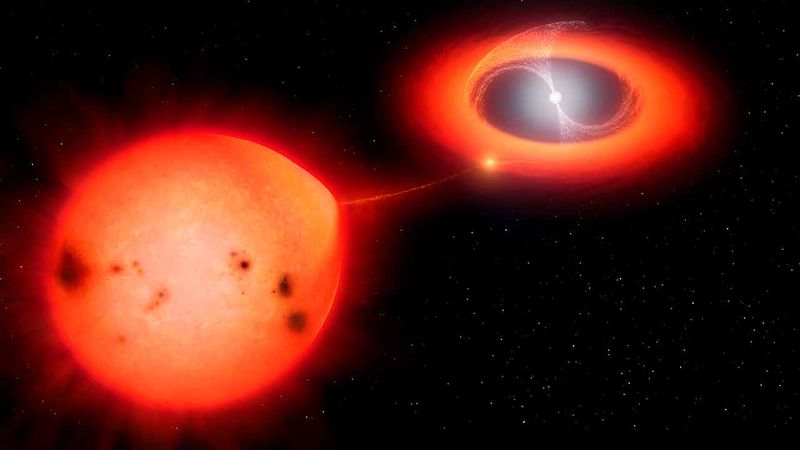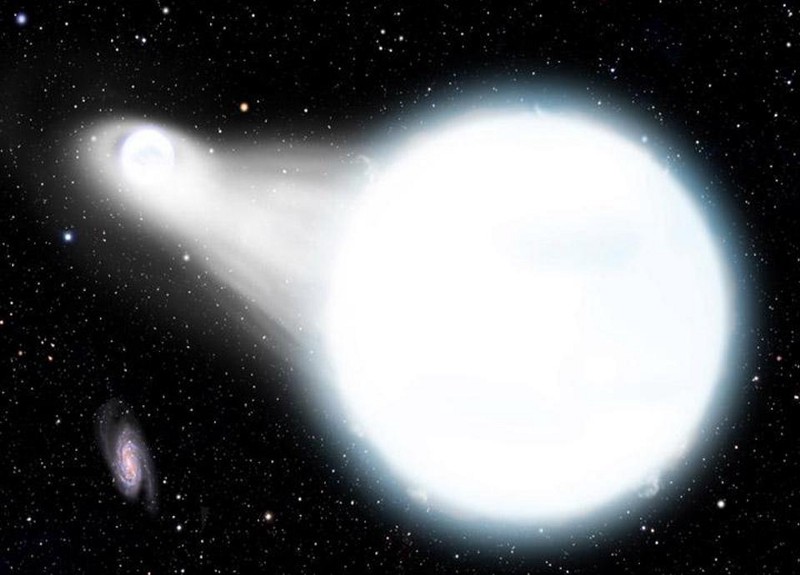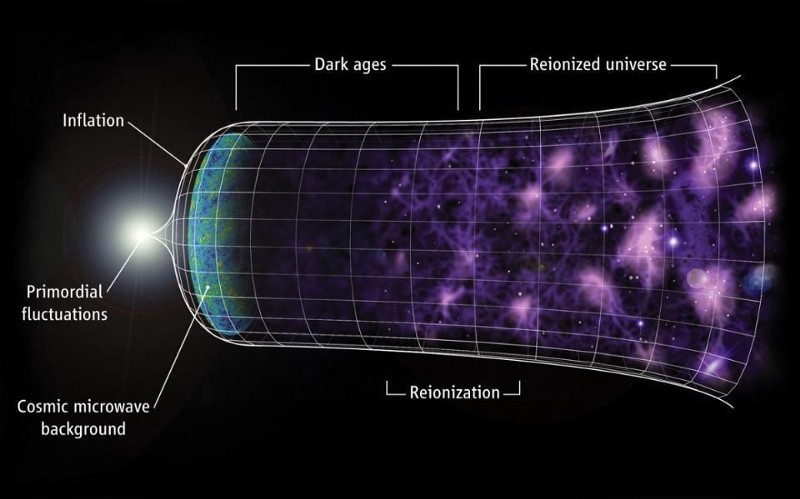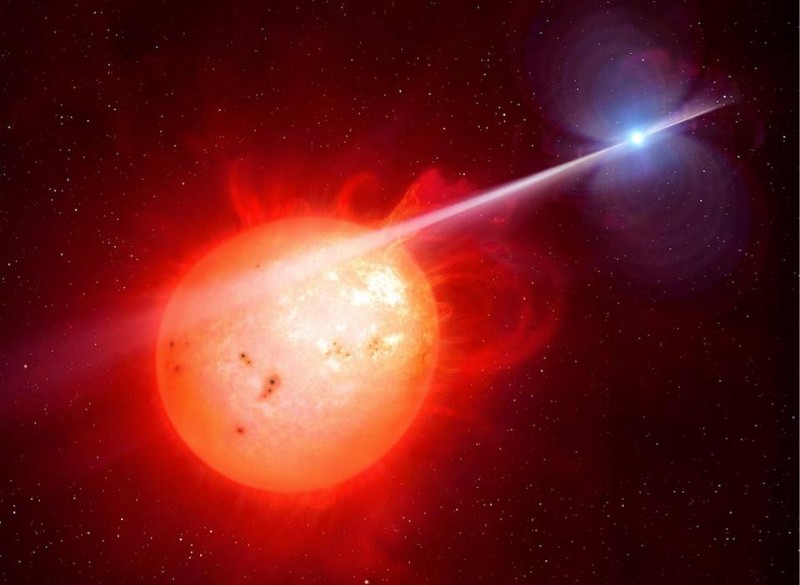Save the Date: 5 Years from Now, Scientists Expect an Explosive Red Nova

In 2008, V1309 Scorpii, a binary, or double-star, system, produced a spectacular red nova when its pair of stars merged. When two stars come together this way, the resulting explosion blasts their contents out and into the universe. It’s a rare thing, so scientists have been scouring the heavens for other binary systems in the hopes of catching a red nova in action. Now an astronomer has announced that he sees a red nova about to blow., and he even thinks he knows when it will happen.
V1309 Scorpii is the most throughly observed red nova so far, with scientists watching it for some time before it merged. Another possible red nova, V838 Monocerotis, erupted in 2002. Scientists aren’t absolutely sure about it, but the Hubble Space Telescope kept an eye on it for a while. This animation that shows what a red nova might look like, with four years of Hubble images combined into a six-second video.
(NASA)
Larry Molnar is an astronomer at Calvin College in Grand Rapids, Michigan. He believes a pair of stars, KIC 9832227, are actually so close to each other that their super-hot plasma atmospheres are touching, making them a contact binary system, and a potential red nova in the making. He’s been watching it at Calvin College’s twin observatories in Michigan and in Rehoboth, New Mexico. He says KIC 9832227 currently looks like a humongous cosmic bowling pin.

(CALVIN COLLEGE/CARA ALEXANDER, DANIEL VAN NOORD, CHRIS SPEDDEN, AND LARRY MOLNAR)
Other scientists have been observing KIC 9832227 for some time, intrigued by its pulsating brightness, unsure of whether they’re seeing two distinct stars or a single binary system. But Molnar and a student, Daniel Van Noord, noticed that “”Over the past ten years, the period of KIC 9832227 has been getting shorter at a faster and faster rate. This implies that the stars are orbiting faster and getting closer together.” Molnar calculates KIC 9832227’s current orbital period to be about 11 hours.
Molnar thought this seemed similar to what V1309 Scorpii had been doing before its explosive merging, so he used astronomer Romuald Tylenda’s data from the older binary as a “Rosetta Stone” for plotting KIC 9832227’s future. It predicted a red nova in roughly five years.
“No one has ever seen a star go into this kind of explosion. No other situation has come up where any astronomer has ever been able to say, ‘this is a star about to blow up,” say Molnar. He believe he’s disqualified other more mundane explanations for the changes being seen. Molnar expects the system’s eventual red nova to look much like V838 Monocerotis, being about as bright as Polaris.
Molnar is making a movie, luminous, about his discovery, and already has a trailer. The release dat3 is — not surprisingly — 2023. Plenty of time for his prediction to come true. Or not.





